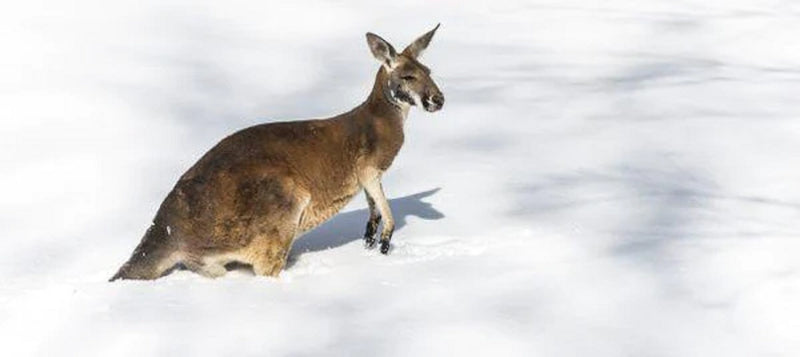Plan an Memorable Winter Vacation to Witness Snow In Australia with Family
Plan an Memorable Winter Vacation to Witness Snow In Australia with Family
Blog Article
Discover the Remarkable Impacts of Snow in Australia on Neighborhood Communities
In spite of its reputation for sun-soaked landscapes, Australia also boasts areas blanketed by snow-- a sensation that exceptionally influences the country's distinct communities. The shielding residential or commercial properties of snowflakes shield flora and animals amidst the coldest wintertimes, while the melting snow nurtures rivers and water life. Nevertheless, the real marvel depend on exactly how these frosty problems shape the nation's biodiversity and nutrient cycles. As we decipher this detailed relationship, we find ourselves treading on undiscovered grounds in Australia's high nation.
The Unexpected Regions of Snowfall in Australia
The high country areas of New South Wales, Victoria, and Tasmania are especially understood for their winter months snow. The Snowy Hills in NSW, for circumstances, receive plentiful seasonal snow, offering a stark comparison to the country's common warm, arid environment. The existence of snow in these regions significantly influences regional ecological communities, consequently affecting the nation's special biodiversity.

Just How Snow Impacts Australia's One-of-a-kind Flora
While it may seem uncommon, snowfall in Australia plays a critical role fit the nation's distinct vegetation. The snow-filled winters months foster resilience in Australian plant types. This is especially obvious in the towering and sub-alpine regions, where snow gum tissues and mountain plum-pines grow. These plants have evolved to survive in extreme conditions, with snow working as a protective covering from severe winds and freezing temperatures. The snow additionally adds to the dampness web content of the soil, providing essential hydration for plant during the completely dry summertime months. Basically, the snow affects the timing of flowering and seed dispersal, the development rates, and the survival of several plant species, showcasing the intricate interplay between environment and flora in Australia.

The Adjustments of Australian Fauna to Snowfall
Simply as Australia's flora has adapted to the wintery conditions, the local animals also, display exceptional adjustments to the snowfall. Species like the Hill Pygmy-possum, the only Australian marsupial known to hibernate, have actually advanced techniques to survive in snowy settings. It uses the snow as insulation, hibernating in rock holes below the snow to remain cozy. The Snow Skink, a varieties of lizard, transforms its colour to white during winter months, giving camouflage against killers. Birds such as the Snowy Mountains' Crimson Rosella additionally change their diet regimens to consume readily available food sources during chillier durations. Therefore, despite the severe problems, Australian fauna shows a durable and flexible nature, guaranteeing their survival in areas experiencing snowfall.
The Role of Snow in Forming Regional Environments
In shaping the neighborhood communities, the duty of snow in Australia is both multilayered and extensive. It influences the circulation of flora and animals, mostly specifying the biodiversity of alpine and sub-alpine regions. Snow provides an essential water source, feeding rivers and tanks as it thaws, therefore sustaining a selection of aquatic life forms. Additionally, snow serves as an insulator, click here now shielding ground-dwelling organisms from extreme cold. It plays a considerable duty in soil formation and nutrient cycling. The regular cold and thawing of dirt generated by snowfall promotes the breakdown of rocks, boosting soil fertility. Subsequently, the existence of snow forms the greenery patterns, animal actions, and general sustainability of Australia's one-of-a-kind ecological communities. Does Australia Get Snow.

The Future of Snowfall in Australia: Predictions and Ramifications

Offered the crucial duty snow plays in shaping neighborhood communities, the future of snowfall in Australia is attracting raising interest from conservationists and researchers. Current environment models anticipate a substantial decrease in snowfall due to worldwide warming, with potentially extensive influence on regional ecological communities. Less snow might lead to decreased water availability in alpine regions, negatively impacting wildlife environments and plant. It can change the timing of seasonal modifications, interfering with the life cycles of many native types. The tourism market, greatly dependent on the winter months snow period, might additionally encounter significant difficulties. As a result, comprehending these predictions and their implications is vital to create reliable preservation approaches, making certain the conservation of Australia's one-of-a-kind biodiversity and the sustainability of its economic situation.
Final Thought
The duty of snow in Australia's ecosystems is pivotal yet typically ignored. It works as a protector, a nurturer, and a shaper of diverse towering species, adding to the splendor of Australia's high nation. As weather patterns proceed to change, recognizing the ramifications and potential transformations of these snow-influenced environments is crucial. Therefore, the snow in Australia is greater than a natural spectacle; it's a crucial gamer in the country's environmental story. you can try these out
Regardless of its credibility for sun-soaked landscapes, Australia also boasts regions blanketed by snow-- a phenomenon that greatly affects the nation's distinct environments. It makes use of the snow as insulation, hibernating in rock gaps below the snow to remain warm - Does It Snow In Australia.In forming the regional communities, the function of snow in Australia is both extensive and multilayered. The presence of snow shapes the plants patterns, animal habits, and general sustainability try these out of Australia's one-of-a-kind environments
Provided the important role snow plays in forming regional ecosystems, the future of snowfall in Australia is attracting raising interest from researchers and conservationists.
Report this page